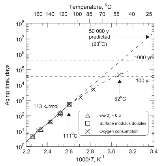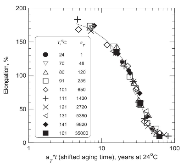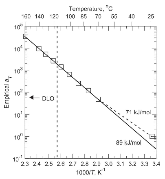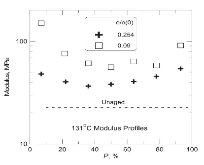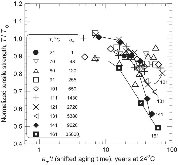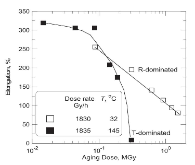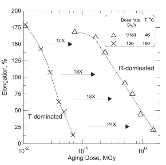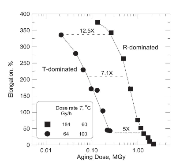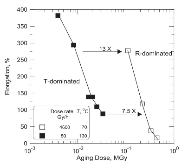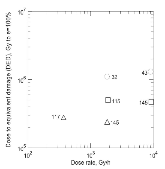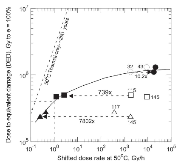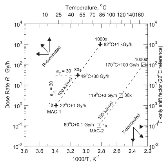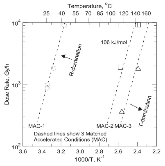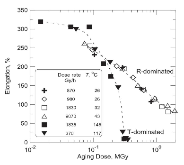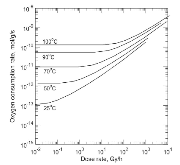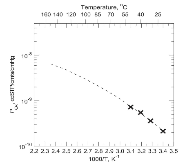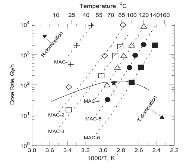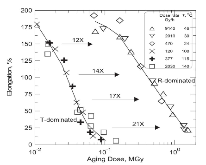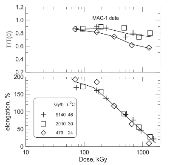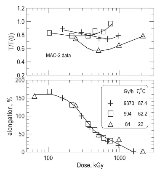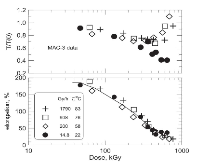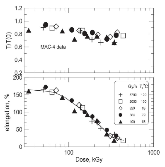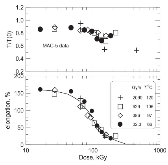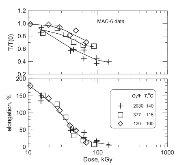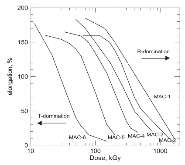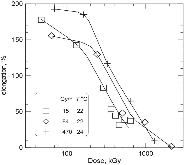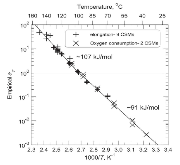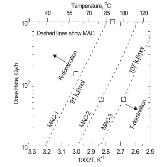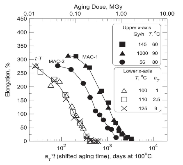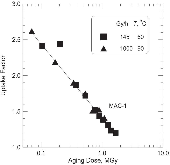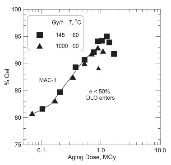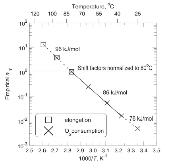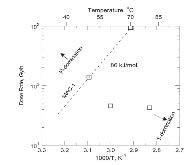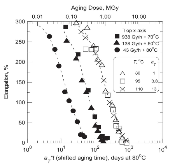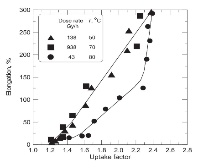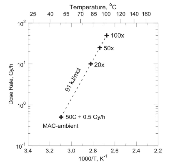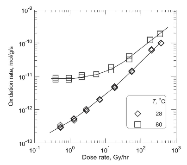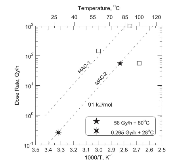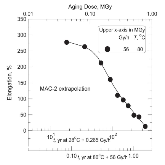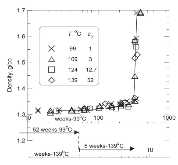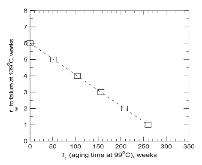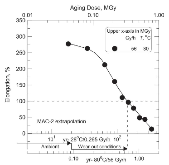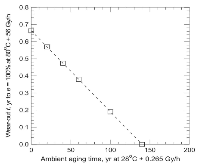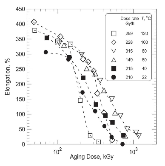Predicting Polymer Degradation and Mechanical Property Changes for Combined Radiation-Thermal Aging Environments
- Sandia National Lab. (SNL-NM), Albuquerque, NM (United States)
Here, a new approach is presented for conducting and extrapolating combined environment (radiation plus thermal) accelerated aging experiments. The method involves a novel way of applying the time-temperature-dose rate (t-T-R) approach derived many years ago, which assumes that by simultaneously accelerating the thermal-initiation rate (from Arrhenius T-only analysis) and the radiation dose rate R by the same factor x, the overall degradation rate will increase by the factor x. The dose rate assumption implies that equal dose yields equal damage, which is equivalent to assuming the absence of dose-rate effects (DRE). A plot of inverse absolute temperature versus the log of the dose rate is used to indicate experimental conditions consistent with the model assumptions, which can be derived along lines encompassing so-called matched accelerated conditions (MAC lines). Aging trends taken along MAC lines for several elastomers confirms the underlying model assumption and therefore indicates, contrary to many past published results, that DRE are typically not present. In addition, the MAC approach easily accommodates the observation that substantial degradation chemistry changes occur as aging conditions transition R-T space from radiation domination (high R, low T) to temperature domination (low R, high T). The MAC-line approach also suggests an avenue for gaining more confidence in extrapolations of accelerated MAC-line data to ambient aging conditions by using ultrasensitive oxygen consumption (UOC) measurements taken along the MAC line both under the accelerated conditions and at ambient. From UOC data generated under combined R-T conditions, this approach is tested and quantitatively confirmed for one of the materials. In analogy to the wear-out approach developed previously for thermo-oxidative aging, the MAC-line concept can also be used to predict the remaining lifetimes of samples extracted periodically from ambient environments.
- Research Organization:
- Sandia National Lab. (SNL-NM), Albuquerque, NM (United States)
- Sponsoring Organization:
- USDOE National Nuclear Security Administration (NNSA)
- Grant/Contract Number:
- AC04-94AL85000
- OSTI ID:
- 1465385
- Report Number(s):
- SAND-2018-8787J; 666928
- Journal Information:
- Rubber Chemistry and Technology, Vol. 91, Issue 1; ISSN 0035-9475
- Publisher:
- American Chemical Society (ACS), Rubber DivisionCopyright Statement
- Country of Publication:
- United States
- Language:
- English
Web of Science
Measurements with silicon photomultipliers of dose-rate effects in the radiation damage of plastic scintillator tiles in the CMS hadron endcap calorimeter
|
text | January 2020 |
Measurements with silicon photomultipliers of dose-rate effects in the radiation damage of plastic scintillator tiles in the CMS hadron endcap calorimeter
|
text | January 2020 |
Similar Records
Dose Rate Effects on Degradation of Nuclear Power Plant Electrical Cable Insulation at a Common Dose
Aging predictions in nuclear power plants: Crosslinked polyolefin and EPR cable insulation materials
